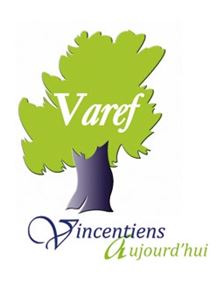Sister Monique Giraud, DC writes of Congress and General Assembly of Network Directors of VAREF, 30-31 January and 1 February 2013
The heads of Vincentian schools met in Bordeaux at the Lycée Saint-Vincent-de-Paul, Sablières Street, near the Place de la Victoire.
A course to learn more about the “new digital generation” animated the reflection of 115 people (principals, assistants in administration and pastoral ministers) anxious to meet the challenges of the transmission of knowledge to the young they prepare for integration into society.
Two researchers:
- A Social Scientist from the University of Victor Ségalen in Bordeaux 2, a specialist in juvenile behavior and digital technology.
- A Neuroscientist from the University of Inserm in Lyon came to share how recent discoveries have led to different approaches to maladaptive behaviors in the school context.
Mr. Zaffran immediately set the framework describing us a “digital immigrants” in a youth culture of “digital natives.” Learning this new language of the youth culture is not just an additional adaptation, such as the one we make when we move to a different region, noting changes in everyday language.
It is evident that digital communication has gone from simple communication to multidirectional and multimedia (photo, text messaging, music, videos) which favors direct access to knowledge to the detriment of generational transmission (from the old to the young). Access to information is what leads to the necessity of a new approach, not based on moral evaluation but on learning to sort through the materials in our possession.
In this new context the adult must find his or her place: a “ferryman of knowledge”, a guard rail, to help the young to find their way through the maze of information that is produced. Let’s not practice abduction of the young (trying to appropriate their ways of communication). We need to move from a fearful view of the digital world to a dynamic view for it to be useful in the construction of personality in the new era of contemporary communication.
Mr. Lachaux, director of research at Inserm, made us conscious of the impact of new communication technologies on patterns of relationship and attention. Analysis of the mechanisms that are active in the brain during certain tasks will help to understand, for example, that attention, before being a moral imperative, is a circuit of brain function, receiving information sent to the affected area. Once transmitted, then deciphered by the brain, it will be transmitted to the motor or sensory system to produce the brain activity necessary for attention or memorization.
The two researchers showed how attention to modes of communication is concerned with the building up of the person and that we must help so that the new digital methods will always become more human. “We must humanize our methods…” Mother Guillemin. Such is the task with which all pedagogical teams are confronted.
In the evening, the delegates realized the patient work of rewriting the statutes of Catholic teaching and Father Alvaro made the connection with St. Vincent, a man of relationships.
Tags: Daughters of Charity, France, Vincentian

